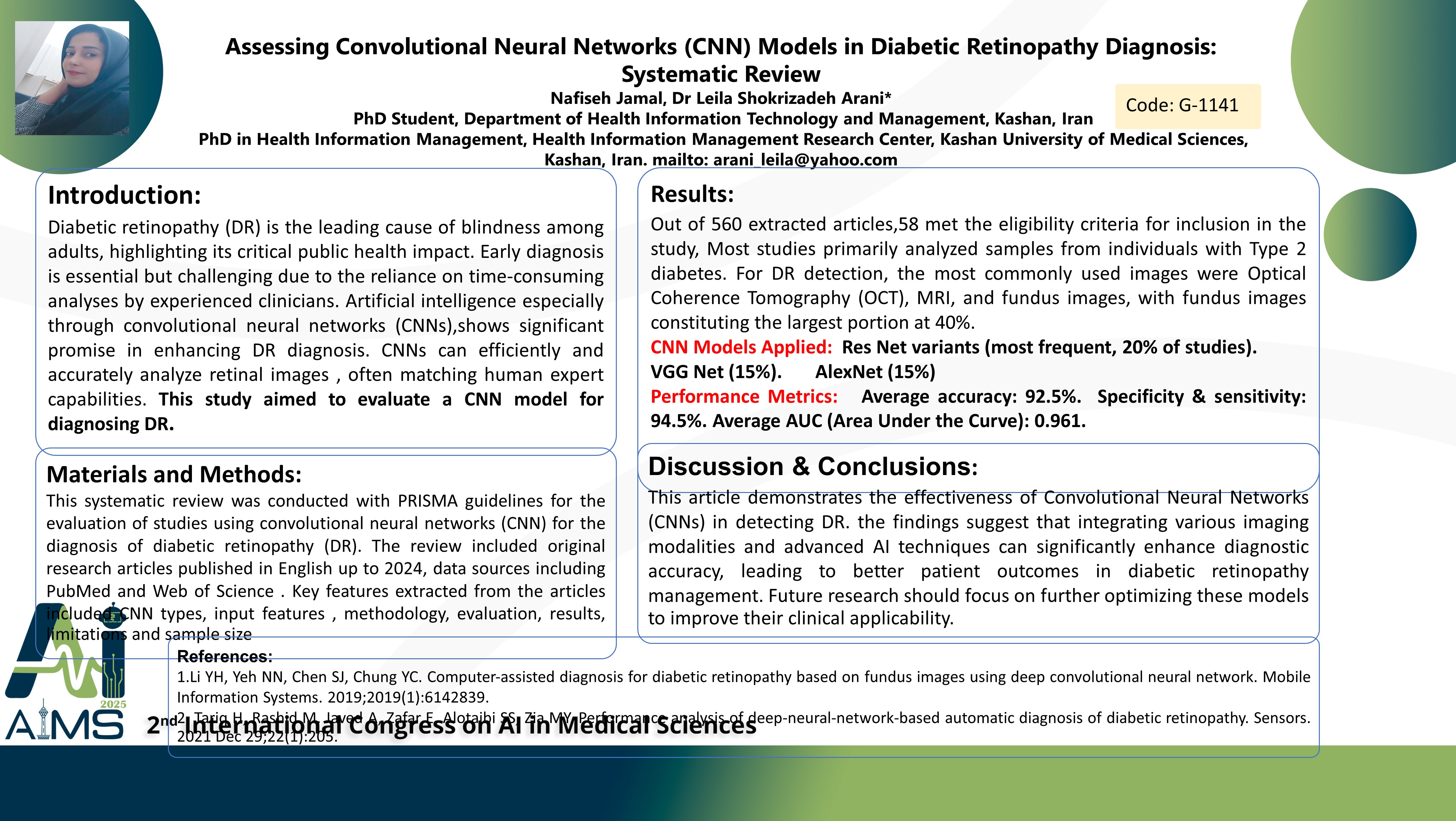Assessing Convolutional Neural Networks (CNN) Models in Diabetic Retinopathy Diagnosis: Systematic Review
Code: G-1141
Authors: Nafiseh Jamal ℗, Leila Shokrizadeh Arani *
Schedule: Not Scheduled!
Tag: Biomedical Signal Processing
Download: Download Poster
Abstract:
Abstract
Background and aims: Diabetic retinopathy (DR) is the leading cause of blindness among adults, highlighting its critical public health impact. Early diagnosis is essential but challenging due to the reliance on time-consuming analyses by experienced clinicians. Artificial intelligence especially through convolutional neural networks (CNNs),shows significant promise in enhancing DR diagnosis.CNNs can efficiently and accurately analyze retinal images,often matching human expert capabilities.This study aimed to evaluate a CNN model for diagnosing DR. Method: This systematic review was conducted with PRISMA guidelines for the evaluation of studies using convolutional neural networks (CNN) for the diagnosis of diabetic retinopathy (DR). The review included original research articles published in English up to 2024, data sources including PubMed and Web of Science using keywords such as "CNN", "diagnosis" and "diabetic retinopathy". Key features extracted from the articles included CNN types, input features (e.g fundus images and OCT), methodology, evaluation criteria (e.g, accuracy and sensitivity), results, limitations and sample size. The aim of this analysis was to identify trends in methodology and performance measures, highlighting improvements in DR diagnostic accuracy using CNN. Results: Out of 560 extracted articles,58 met the eligibility criteria for inclusion in the study, focusing on the performance of Convolutional Neural Networks (CNNs) in detecting diabetic retinopathy (DR). Most studies primarily analyzed samples from individuals with Type 2 diabetes, which made up 56% of the samples. For DR detection, the most commonly used images were Optical Coherence Tomography (OCT), MRI, and fundus images, with fundus images constituting the largest portion at 40%. The significant CNN models included ResNet variants (20% of studies), followed by VGGNet and AlexNet (each 15%). The evaluation metrics showed strong CNN performance in identifying diabetic retinopathy, with an average accuracy of 92.5%, specificity and sensitivity of 94.5%, and an average AUC of 0.961. Conclusion: This article demonstrates the effectiveness of Convolutional Neural Networks (CNNs) in detecting DR. the findings suggest that integrating various imaging modalities and advanced AI techniques can significantly enhance diagnostic accuracy, leading to better patient outcomes in diabetic retinopathy management. Future research should focus on further optimizing these models to improve their clinical applicability.
Keywords
Convolutional Neural Networks, Diabetic Retinopathy, Detection
